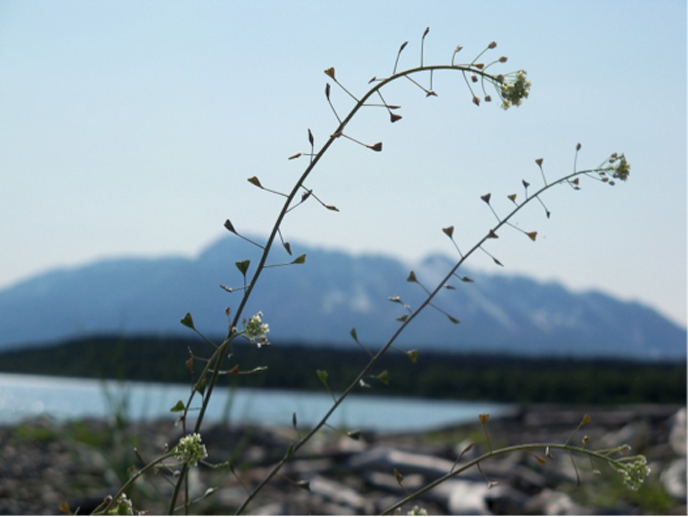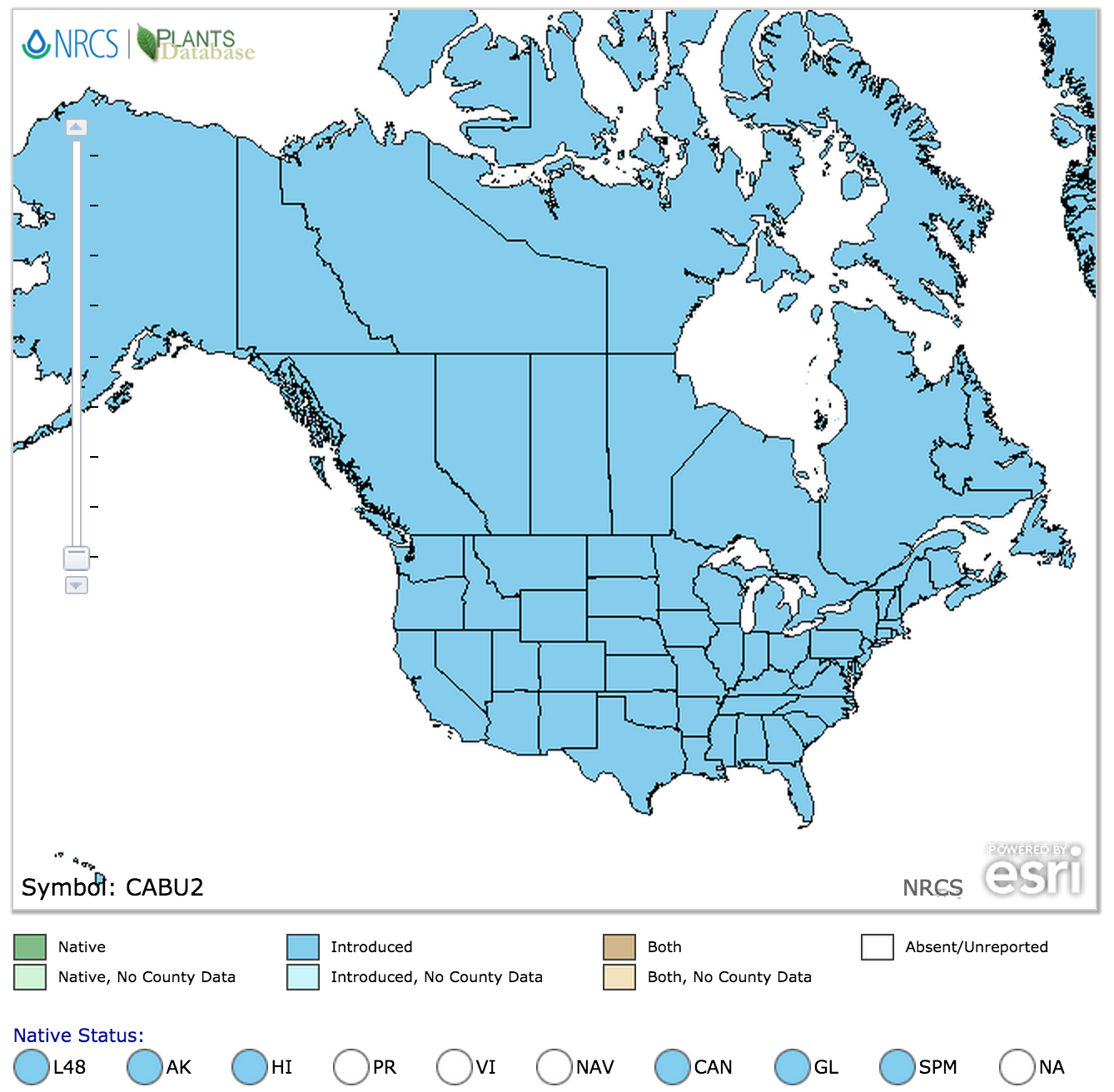
Shepherd’s purse (Capsella bursa-pastoris) often grows on lake shores in Katmai. Its heart-shaped seed pods are a distinguishing characteristic. NPS photo.
I woke up at 7 a.m. with an icy head dunk in Naknek Lake and some peanut butter. After completing this sacred ritual, Melissa Armstrong and I prepared for the field. We were on the hunt for Katmai’s most wanted invasive plants.
Everything needs to be ready: Trimble GPS, weeding tools, plant bags, rain gear, and more. Today, Bob, a biological science technician, is joining us to drive the boat, check out the plants, and keep a lookout for roaming bears. First, we review our plan of attack—load our trusty vessel, the Palayaq, cruise out and survey some remote locations on Naknek Lake, pull any invasive plants if found, and come back home for a fine cocktail of data uploads and mac and cheese with tuna. Everything gets loaded and we set off for the unknown.
After about an hour of water, waves, and float coats, we land at the mouth of Margot Creek. We step onto the beach and wade across to the sandbars opposite the stream. Sweeping back and forth with our heads down, we check for any sign of our nemesis. There it is: the curse of the purse! Shepherd’s purse (Capsella bursa-pastoris) to be exact. This nasty mustard with its mocking heart-shaping seed pods and angelic white colored flowers has the ability to completely cover large areas of earth with numerous tangling stems. It has come to be the bane of our weed pulling existence and must be destroyed in Katmai. Luckily, this plant is easy to pull and in no time it’s out of the ground and in the bag.
 Jordan Tourville with a bounty of bagged non-native plants. NPS photo.
Jordan Tourville with a bounty of bagged non-native plants. NPS photo.
 Shepherd’s purse is not native to North America, but it is found in every U.S. state. Map courtesy ofUSDA Plants Database.
Shepherd’s purse is not native to North America, but it is found in every U.S. state. Map courtesy ofUSDA Plants Database.
Trimble in hand, we mark its location and note other relevant plant and control work attributes. Except for a small patch of Pineappleweed, the rest of the area appears to be weed free. That’s how the day goes, moving to a new spot, finding few invasive plants, numerous and wondrous native plants, dodging female bears with her tailing spring cubs, and taking in the breathtaking mountain landscapes.
At 4 or 5PM, we decide enough is enough. After a long cruise back to the office, we upload the GPS data and prepare it for editing. It will be used to help create a map of infestations which will not only display invasive plant locations in Katmai, but throughout the Alaska park system.
I have been asked, why control these plants at all? The answer is that most invasive plants cause a great deal of ecological and economic damage to large areas. They alter the natural beauty of our national parks which runs counter to NPS goals. In order to preserve the pristine parks of Alaska, not only people like me, but everybody should be aware of the dangers these plants pose and research what can be done to prevent their spread. For me at the end of the day, it certainly feels great knowing that we contributed our share to this magnificent enterprise. For the moment however, all I can think about is the mac and cheese with tuna.
